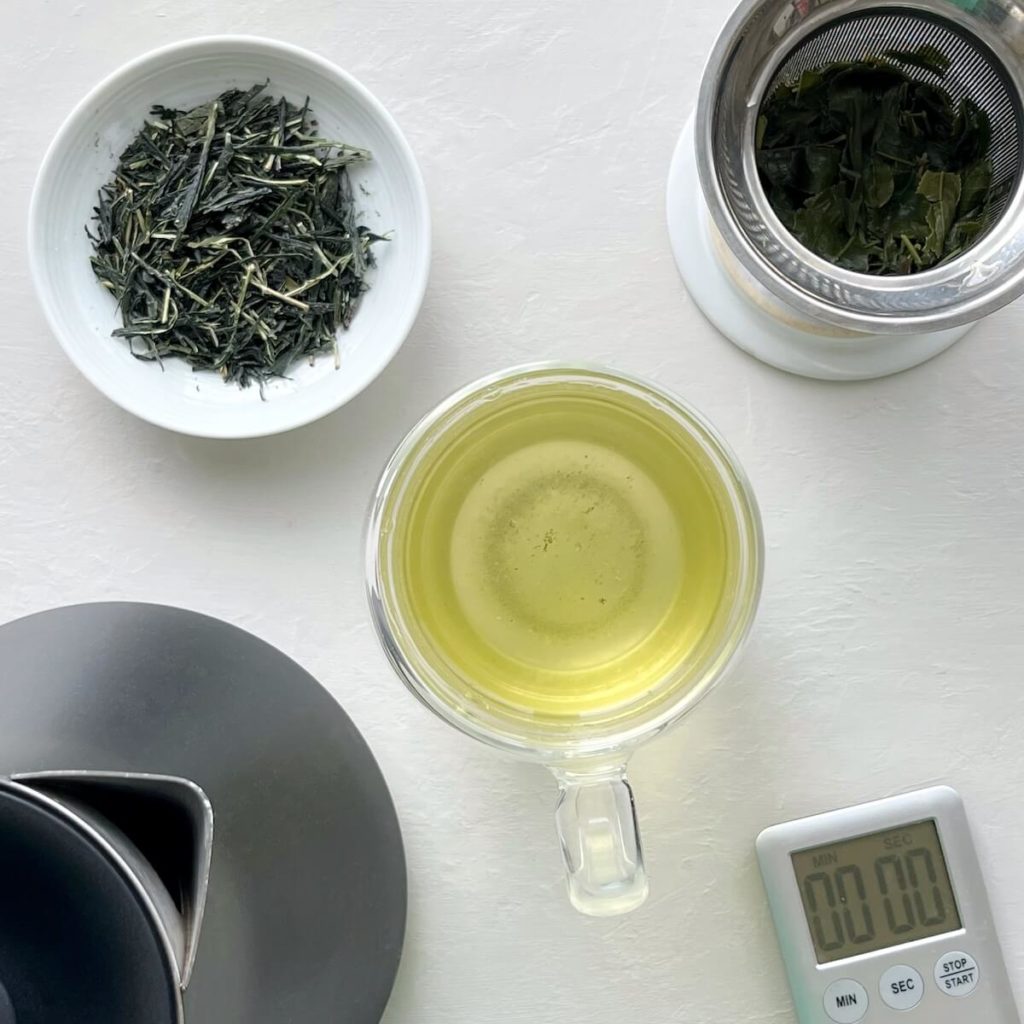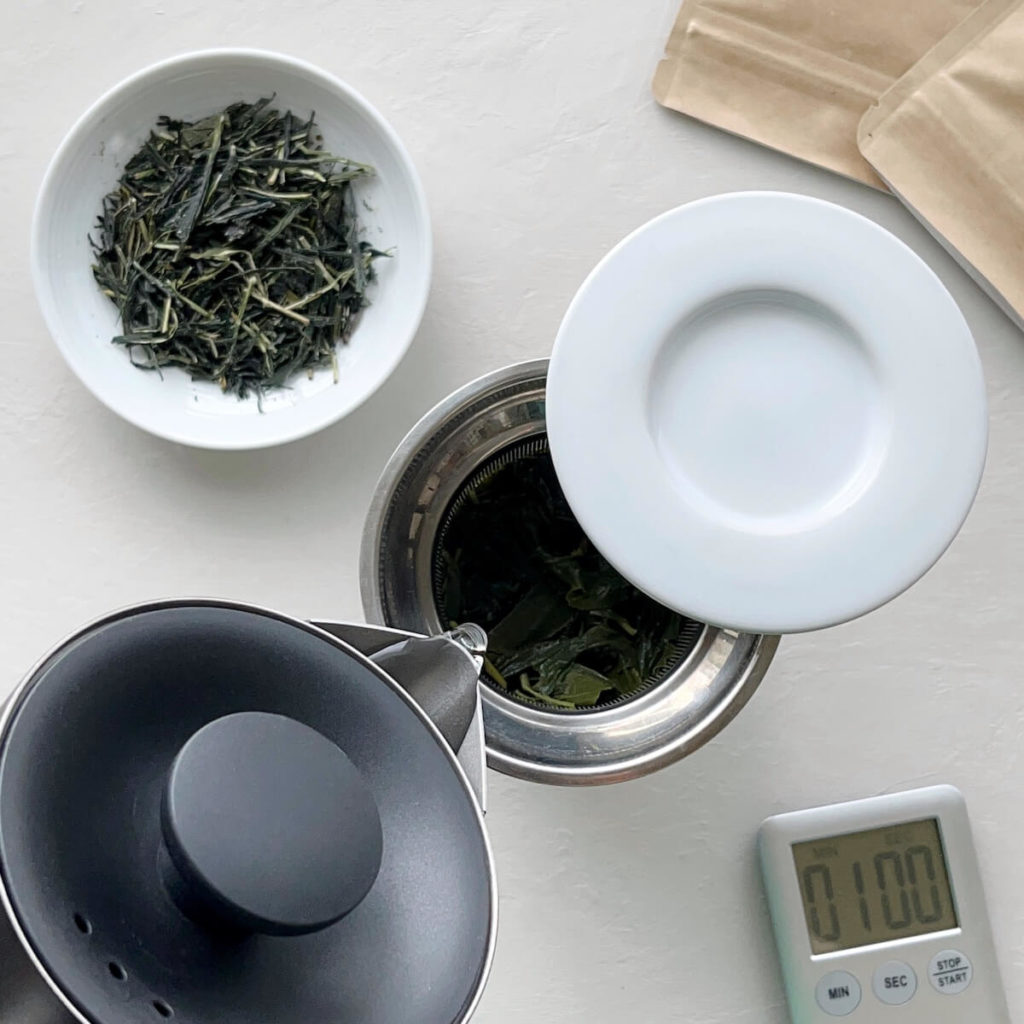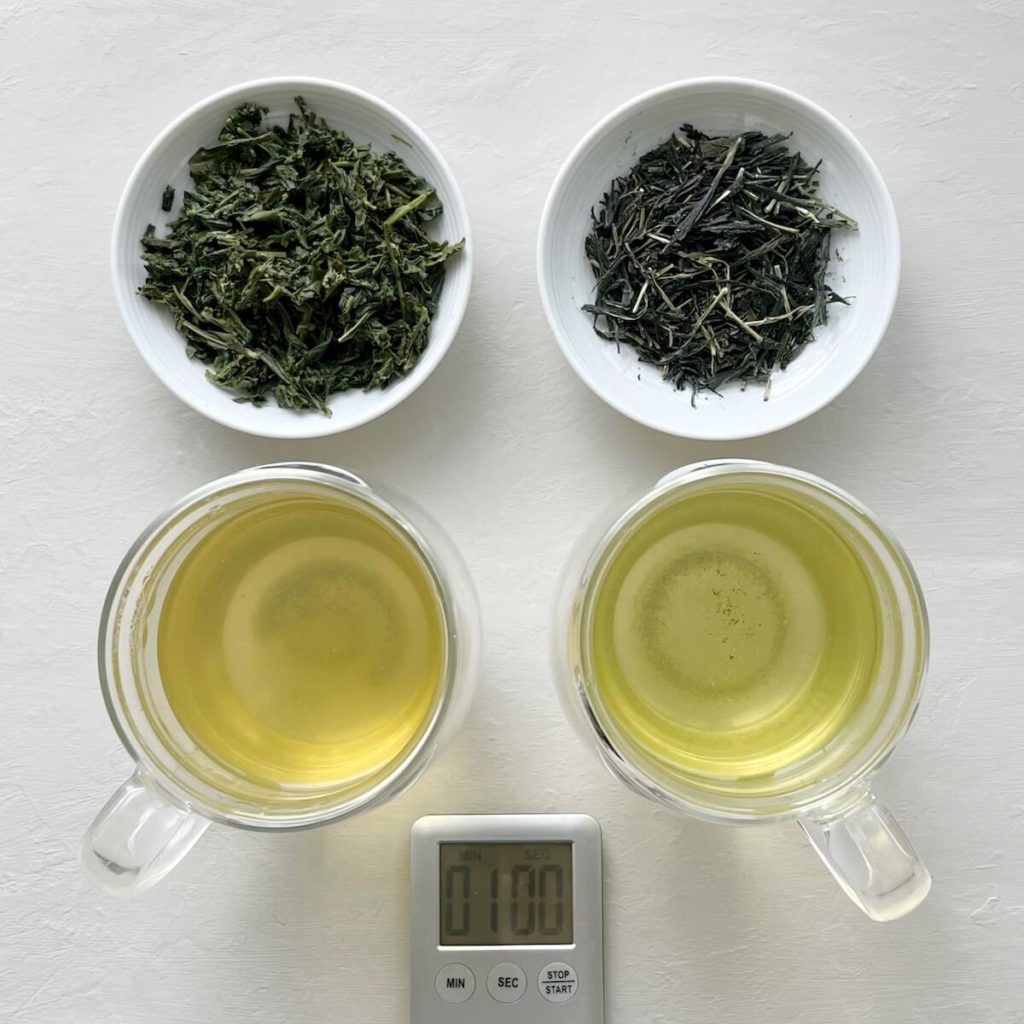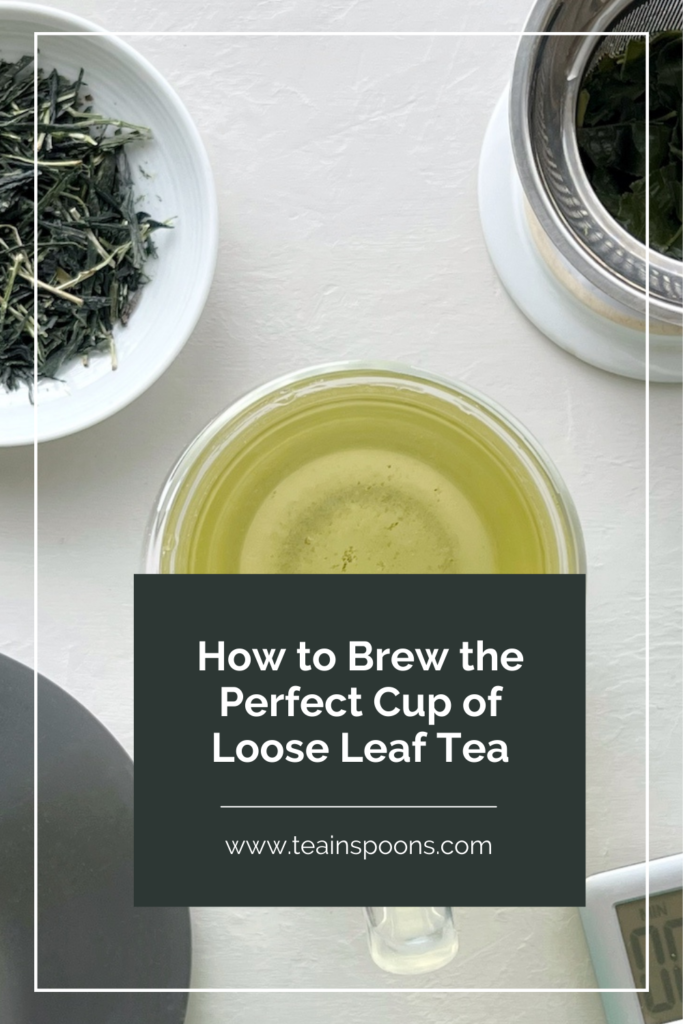
When I first started my tea journey, I couldn’t figure out how much leaf, water, or time I needed and brewing tea always felt chaotic. So, in this post, I wanted to focus on how to brew the perfect cup, along with some tips and tricks I’ve learned along the way!
Brewing tea is a straightforward process, but there are some nuances to it. The core thing to remember is that there are three main parameters: the amount of tea, the amount of water, and the duration of time.
This will be a follow-up to my post regarding top essential items for new loose leaf tea drinkers, so these suggestions will be for brewing the perfect 8 oz cup of tea with a strainer.
You will need:
- Tea
- Water
- Vessel (8 oz cup or mug)
- Strainer
- Lid for your vessel
- Timer
How to brew loose leaf tea
1. Use a clean vessel and strainer:
- A clean brewing vessel and strainer ensures that leftover flavours from other drinks don’t mix into the tea you are trying to brew!
- I recommend not using a tea ball as loose leaf tea doesn’t have enough space to unfurl and that could affect the final taste of the tea.
2. Warm up the vessel:
- Add some hot water to the vessel and slosh it around, then pour out the water.
- This is especially useful if you live in a colder environment since a cold vessel can leach away the heat and decrease the water temperatures. If the water temperature isn’t hot enough (different types of teas brew at different temperatures), the tea may not release all its flavours.
3. Add the tea leaves to the vessel:
- Generally, I use the amount of tea recommended by the company. With an 8 oz cup, that is typically a teaspoon, but always check to be sure!
- If you are finding the flavour isn’t to your liking, consider the amount of tea you are using:
- if the tea is too weak in flavour, try adding more tea.
- if it is too strong in flavour, try adding less.

4. Pour water into the vessel:
- Use filtered water, if possible, to remove contaminants from your water and get the best tasting tea possible. Water makes up the majority of the tea!
- I normally add the tea leaves in first then the water, so the water soaks into the leaves.
- For more delicate teas, I may add the leaves on top of the water so the tea doesn’t get burnt.
5. Cover and steep:
- When covering the vessel, it traps the heat of the water and also the lovely aromas of the tea!
- Some mugs come with a lid but lids are also sold separately. If not, a small dish or saucer would work!
- When I try teas for the first time, I will pick the middle of the time range provided by the company. Then, I will adjust the time depending on the tea and what taste I want.
- Start the timer once the water hits the tea leaves.
6. Remove the tea leaves from the vessel:
- The longer the tea steeps, the more opportunities for the water to draw out additional compounds from the tea. If you want a stronger (or more bitter) tea, try steeping longer. However, if you want a more delicate (or lighter) tea, steep for less.
7. Drink and enjoy!
- Hopefully, at this point, you’ve made a cup of tea you like. If not, that is fine too! There are so many types of teas out there, you’ll find one you like!
Water temperature experiment

One useful thing to try is to brew the same amount of tea using warm water and hot water and then compare the two. This will help you understand why water temperature is important! I suggest green tea as it will have the most obvious results.
1. Use two 8 oz cups/mugs (use the same type or as similar as you can!).
- Add the same amount of tea to each cup/mug.
- I suggest green tea for the most obvious results.
- Use 1 teaspoon, 1 tea bag or 3-5 grams of tea
2. Heat up the water to boiling.
- If you have a variable temperature kettle or a thermometer, use 90°C (194°F) and 60°C (140°F).
- If you do not have a variable temperature kettle or a thermometer, see Step 3.
3. Add 8 oz of water into each cup/mug and brew for 1 minute. Remove the leaves.
- Without a thermometer or variable temperature kettle:
- Pour boiling water into one cup and cover with the lid. Steep for 1 minute and then remove the leaves.
- Let the rest of the water cool down so it is warm to the touch, and then add it to the second mug. Let it steep for 1 minute and remove the leaves.
4. Taste and compare!
- What does the tea look like?
- What does the tea taste like?
- What do you like better?
Final Thoughts
I hope this quick primer and experiment helps you start to feel more comfortable brewing tea! Let me know if there is anything else I missed or I should include. If you have any other questions, let me know!
The question of the post: What is the most difficult part for you when it comes to brewing tea?
Liked this step-by-step guide on how to brew the perfect cup of tea? Pin it!

